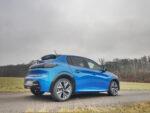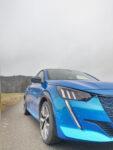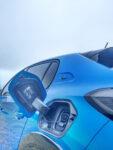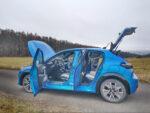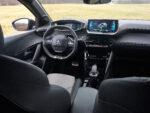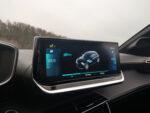During the development of the new generation of Peugeot 208, a fully electric version of this model was already considered. The new e-CMP chassis platform thus enabled the creation of a fully electric version, without any significant differences from variants with a gasoline or diesel engine.
I value the new generation of the Peugeot 208 above all for its dynamic style, which it demonstrates both in the exterior and in the interior. I already got my hands on both the petrol and diesel versions, and in both cases the car pleasantly surprised me with its driving dynamics, which was also accompanied by excellent fuel consumption in the case of the diesel variant.
However, now we have an imaginary cherry on the cake, at least as far as the purchase price is concerned, because we have tested the fully electric version of the 208 model.

Exterior
As I already mentioned in the very introduction, the electric "two hundred and eight" does not differ significantly from its siblings with a traditional drivetrain. However, you can easily recognize it by the plaque with the letter E on the C-pillar and the trunk lid.
We still have the typical and distinctive light signature that the 508 model successfully came up with. The light "three claws" make the small Peugeot very dynamic and easily recognizable. Of course, the front part also has a bulky front mask and an elegantly shaped bumper.
The side profile of the car impresses with distinctive black lacquered edges, and then, for the size of the car, a rather long hood, which pushes the cabin itself more towards the rear of the body.
The rear taillights, again bearing the typical lighting signature, are effectively connected into one continuous horizontal element. Like the advertised edges, the rear door lip or a large part of the rear bumper, it is painted in a glossy black color that contrasts with the paintwork of the entire car.
For me, the new generation of the Peugeot 208 is one of the best-looking cars in the given segment, and fortunately, even its electric design has not changed that.

Interior
Similar to the exterior, there are no major changes in the interior of the electric version.
With the arrival of the new generation 208, the principle of the i-Cockpit has been moved to a higher level and comes in a three-dimensional design.
The dashboard itself then has clear horizontal proportions, and its central motif is still the on-board infotainment display, which offers diagonal sizes of 5, 7 and 10″. The display, through which many of the car's functions are controlled, then has a fairly familiar environment and graphics. Its installation in the dashboard is distinctive, clearly oriented towards the driver and ergonomically very well functioning.
As part of the electric version, the display environment of the on-board infotainment is expanded to include an electric drive assistant, which informs you about the energy flow, current and long-term consumption, or the charging status.
Under the on-board infotainment display itself, there are both purely touch and mechanical controls. Their centralization and fairly discreet treatment frees up space for other elements on the dashboard, such as a flip-up box that has space for your mobile phone. The door of the box practically tilts towards you to a horizontal position, after it is tilted, the size of the storage space increases pleasantly. On the sides of this box there are ports for classic USB and USB-C.
The space between the seats offered two drink holders, a control for the electronic handbrake and a control for selecting driving modes, as well as an armrest and a "gearbox" selector.
The instrument compartment in front of the driver is a separate chapter. Traditionally, this is raised above the small and flattened multi-function steering wheel in accordance with the I-Cockpit principle. However, Peugeot is coming up with something new and has given the small 208 a chapel that has a 3D graphic treatise. Information about the car and driving is then displayed in 2 levels according to importance and priority. You can then personalize the displayed data as you wish.
The interior space of the 208 is intended mainly for the crew in the front positions, there are spacious and comfortable seats with lateral guidance. In the rear positions, it's noticeably worse. Taller figures will have a problem here, both in headroom and in places for the knees.
The luggage compartment will then offer a respectable 309 liters of volume and fairly good access.
The interior of the Peugeot 208 is therefore an adequate complement to the stylish exterior, it is dynamic, timeless and very handsome. However, the overall assessment is very subjective, thanks to the i-Cockpit principle, which unfortunately does not suit everyone.
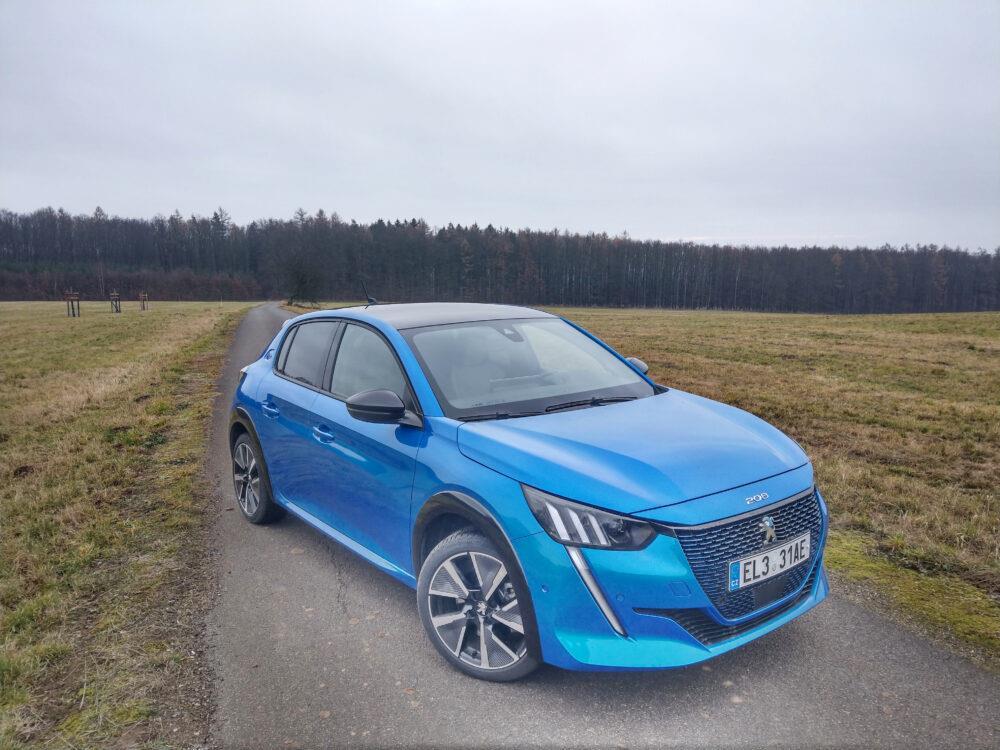
Powertrain and driving characteristics
The electric 208 is powered by an electric motor with an output of 100 kW and a torque of 260 Nm. The electric motor quite logically drives the front axle and cooperates with a battery with a capacity of 50 kWh (only 45 kWh usable), which is elegantly laid out in the floor of the car.
The announced electric "gearbox" is then shared by the "208" with the Peugeot e-2008, Opel Corsa or the French premium DS 3 Crossback E-Tens.
The electric Peugeot 208 comes with the already traditional advantages of an electric car, which are a quiet and comfortable driving performance. In the case of the "two-hundred-eighth", let's add very decent driving dynamics and ideal compact car dimensions for the city.
The car traditionally works with three driving modes and offers a full 100 kW of power and 260 Nm of torque in Sport mode. In this mode, the 208 is incredibly nimble with an immediate onset of performance.
The Normal mode reduces the output to approx. 80 kW and the car's response to the gas pedal is also milder. The Eco mode then just continues the established performance attenuation.
The classic automatic transmission selector for cars with a traditional drivetrain is supplemented with the "B" position for the electric version, in which the car recovers more significantly and decelerates more intensively. So you can drive the car either in the classic "D" mode or with a more intensive recuperative effect in the "B" position.
After you get used to the operation of the car in the "B" position, you can in certain situations quite comfortably and freely "brake" just by moving the selector to this position, without the need to primarily step on the brake pedal.
In terms of consumption, the Peugeot e-208 boasts a range of 340 km on a full charge of its battery, according to the WLTP method. But as we know, the reality tends to be slightly different and the range of an electric car depends on many factors.
I tested the electric 208 in conditions where the weather was already quite dry and the temperatures were only slightly above zero. With full user comfort, after a week's test I reached an average consumption of around 18 kWh/100 km (range around 250 km). In city traffic, the consumption was around 15 kWh/100 km, unfortunately the "208" doesn't do very well at highway speeds and the consumption here rises to 25 kWh/100 km. However, I believe that the annual average of the car's consumption will show considerably better numbers.
The Peugeot e-208 is equipped with a CCS – Type 2 socket, which allows not only standard alternating current charging, but also direct current charging at a maximum power of a fast charging station of up to 100 kW. At this power, the battery will be charged to 80% in about 30 minutes.
The car is also equipped with a certain thermoregulation of the battery, which can automatically cool or heat it. We also have a three-phase on-board charger with a power of 11 kW, which allows us to use the potential of the three-phase distribution network. The 11 kW WallBox thus charges the car (0-100%) in 5 hours. If you are going to charge the e-208 from a home socket, count on 30 hours.
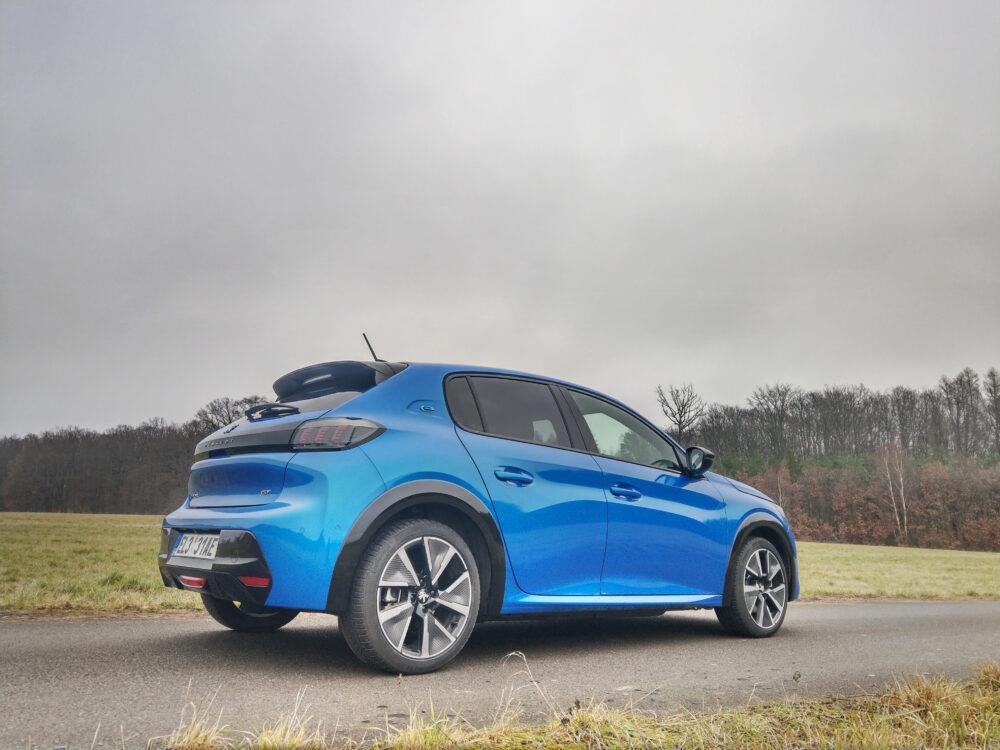
In conclusion
Before the final evaluation, let's first take a look at the current price list. Unfortunately, this is where I see the biggest "but" for the tested e-208.
The cheapest Peugeot 208 is available as part of the promotional price for 325,000 CZK including tax. This is the basic ACTIVE equipment with a 75-horsepower three-cylinder 1.2 PureTech gasoline engine and a five-speed manual transmission. The cheapest diesel 1.5 BlueHDi (100 horsepower) with a manual can be purchased from CZK 408,000 including tax within the promotional price.
On the other hand, the top-of-the-range GT Pack will offer a 1.2 PureTech gasoline three-cylinder engine in two performance variants, 100 hp with automatic starts at CZK 570,000 including VAT and 130 hp with automatic at exactly CZK 600,000 including VAT.
The electric version of the Peugeot e-208 is then available from the e-ALLURE equipment. As part of the promotional price for a car equipped in this way, you will pay a whopping 810,000 CZK including VAT, while the highest equipment e-GT Pack is available from 910,000 CZK including VAT.
The higher purchase price of this otherwise capable urban electric car has become its biggest weakness. The Peugeot e-208 is a car of contemporary design with a well-crafted and imaginative interior, to which its electrification has also brought a quiet and comfortable driving performance with a certain amount of dynamism.
Source: Author's text
Image source: Author's own photos









